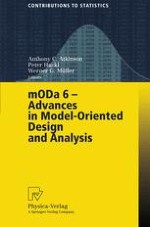This book includes many of the papers presented at the 6th International workshop on Model Oriented Data Analysis held in June 2001. This series began in March 1987 with a meeting on the Wartburg near Eisenach (at that time in the GDR). The next four meetings were in 1990 (St Kyrik monastery, Bulgaria), 1992 (Petrodvorets, St Petersburg, Russia), 1995 (Spetses, Greece) and 1998 (Marseilles, France). Initially the main purpose of these workshops was to bring together leading scientists from 'Eastern' and 'Western' Europe for the exchange of ideas in theoretical and applied statistics, with special emphasis on experimental design. Now that the sep aration between East and West is much less rigid, this exchange has, in principle, become much easier. However, it is still important to provide opportunities for this interaction. MODA meetings are celebrated for their friendly atmosphere. Indeed, dis cussions between young and senior scientists at these meetings have resulted in several fruitful long-term collaborations. This intellectually stimulating atmosphere is achieved by limiting the number of participants to around eighty, by the choice of a location in which communal living is encour aged and, of course, through the careful scientific direction provided by the Programme Committee. It is a tradition of these meetings to provide low cost accommodation, low fees and financial support for the travel of young and Eastern participants. This is only possible through the help of sponsors and outside financial support was again important for the success of the meeting.
